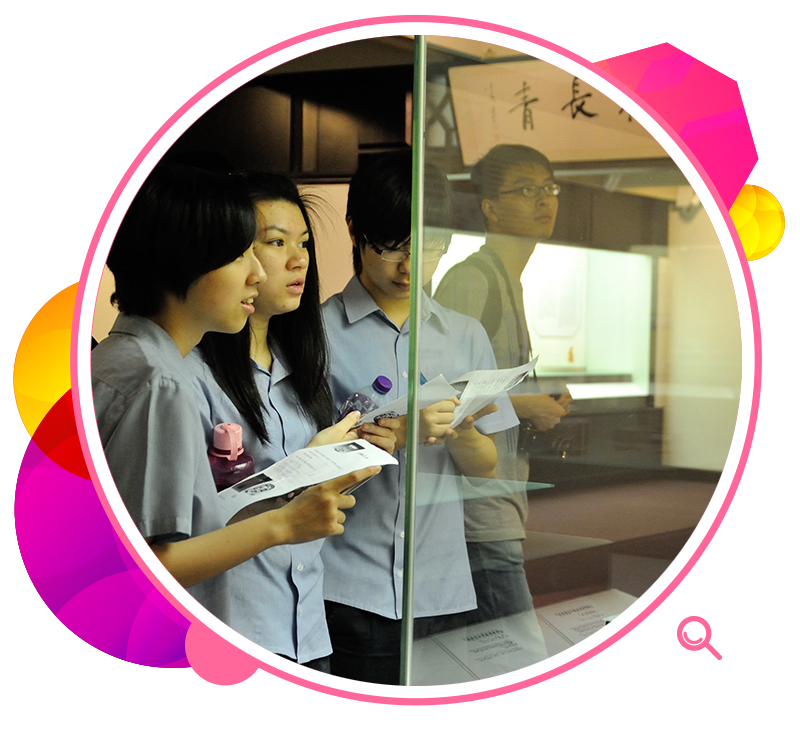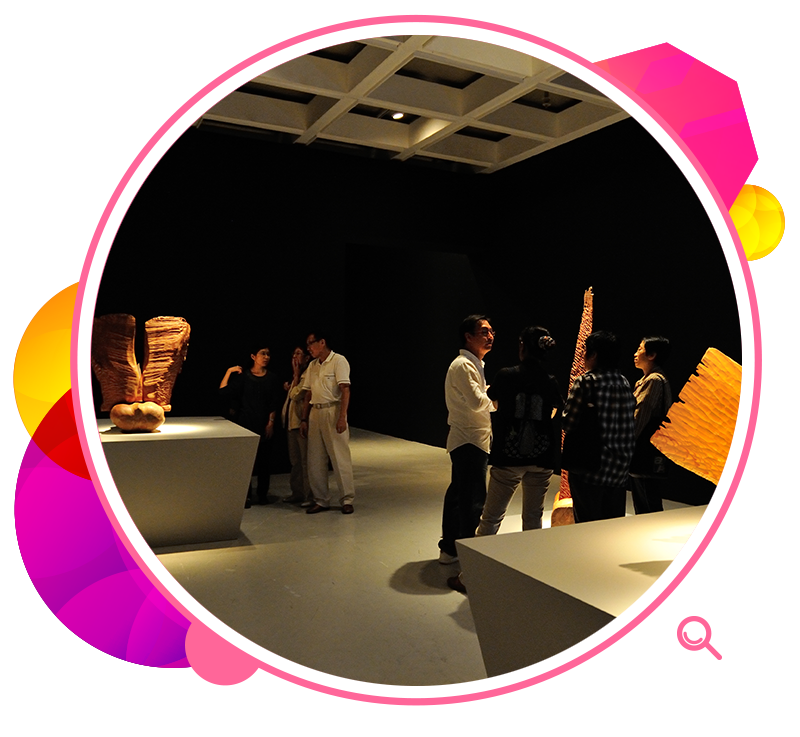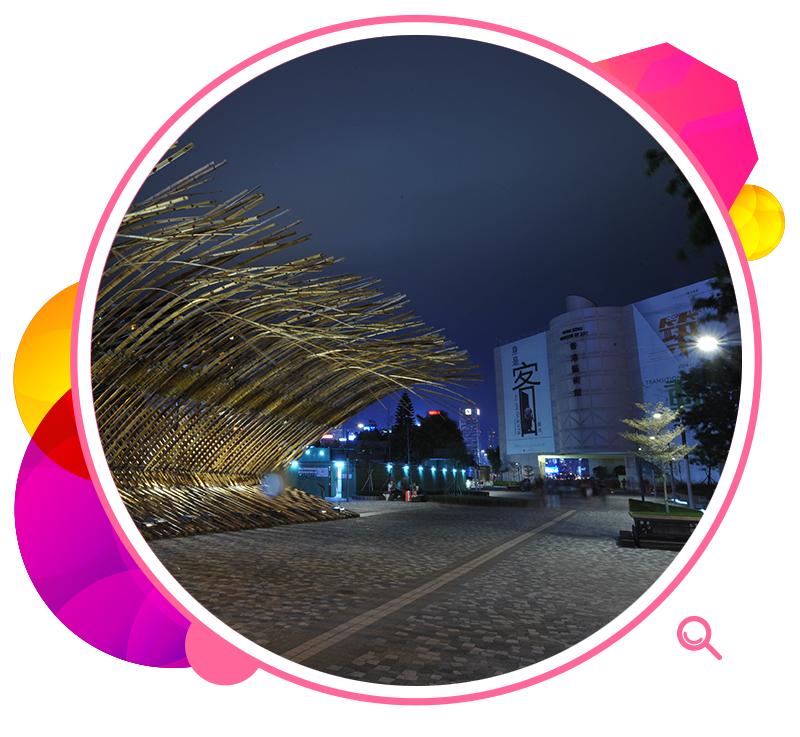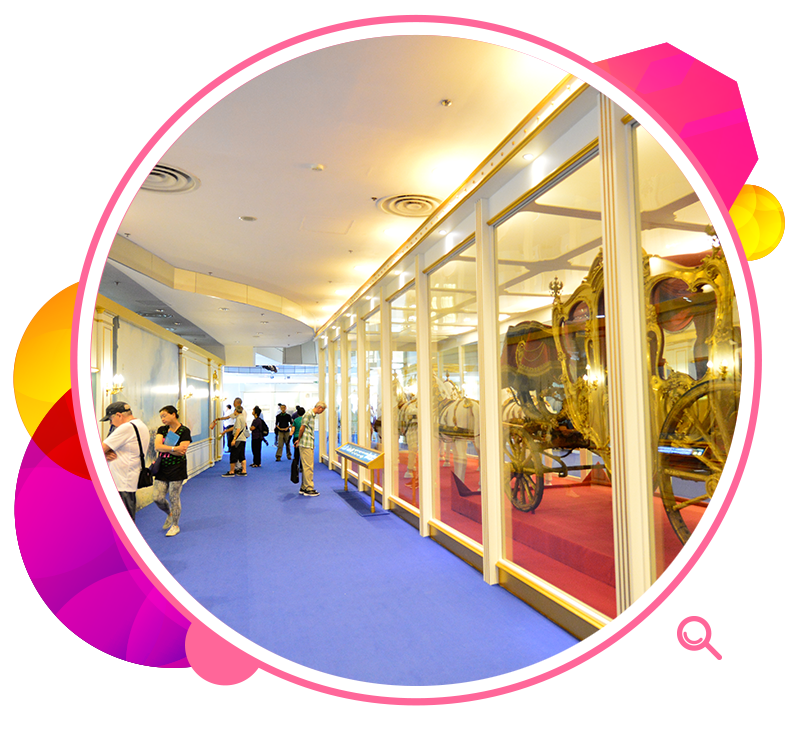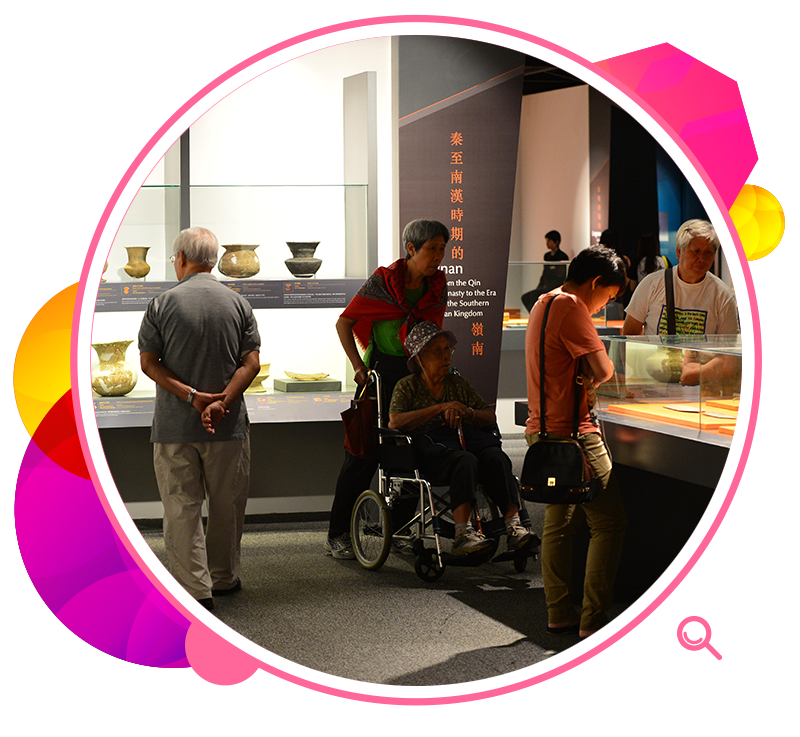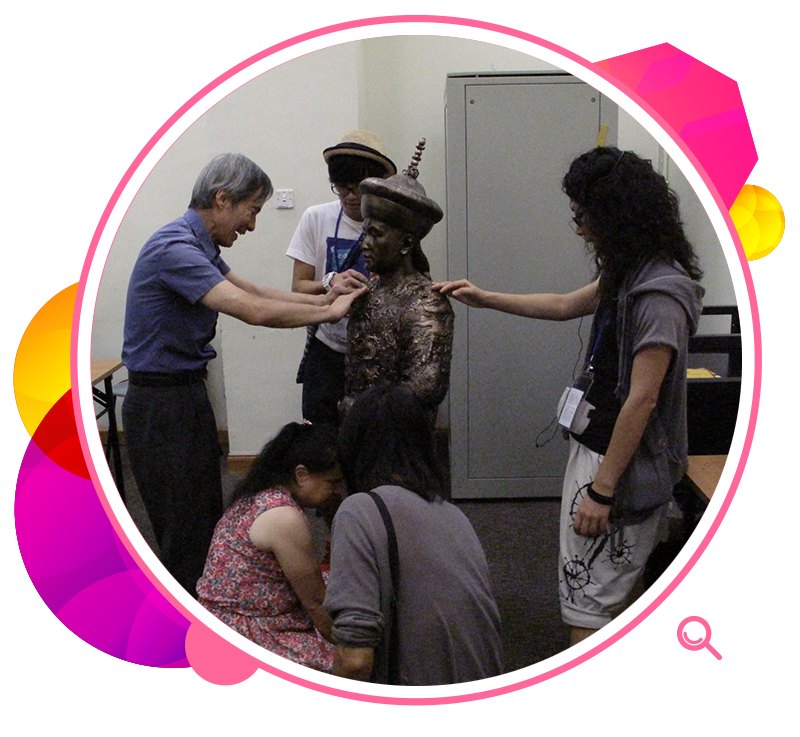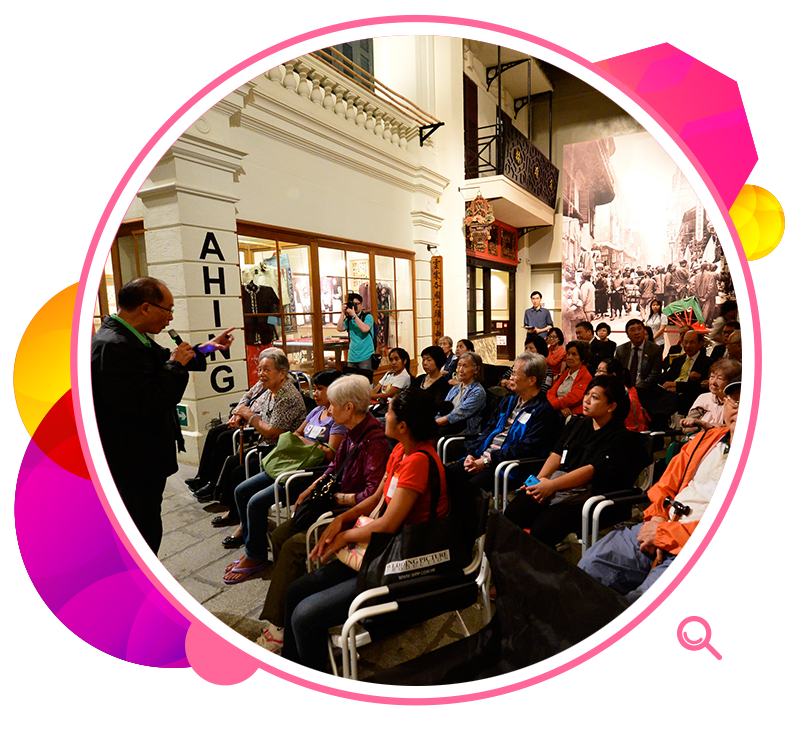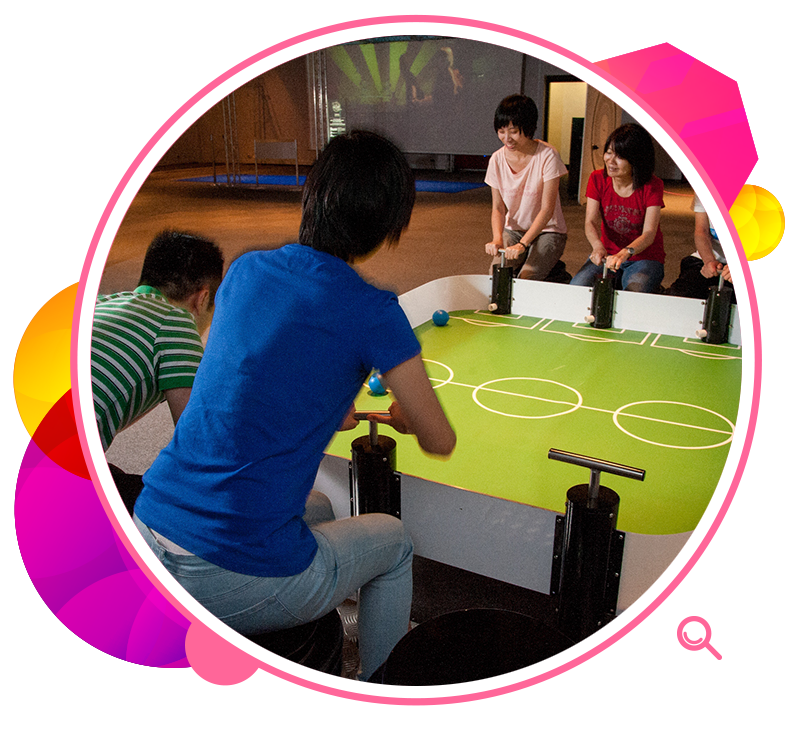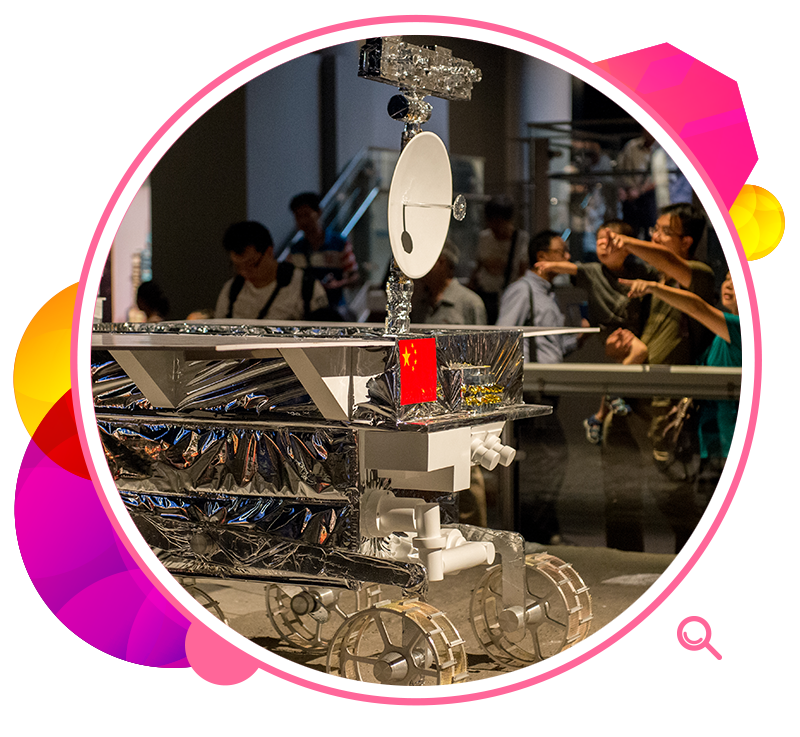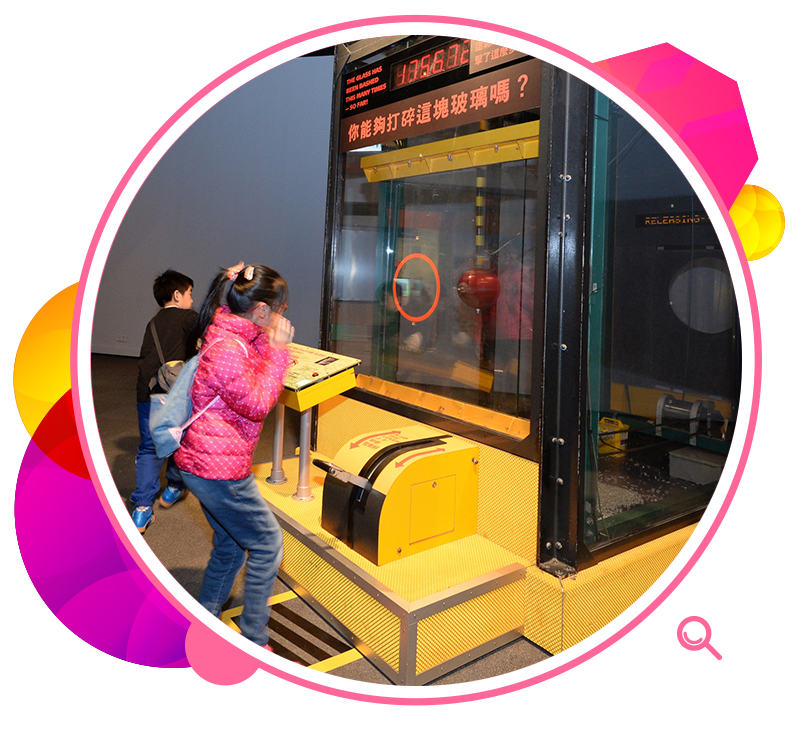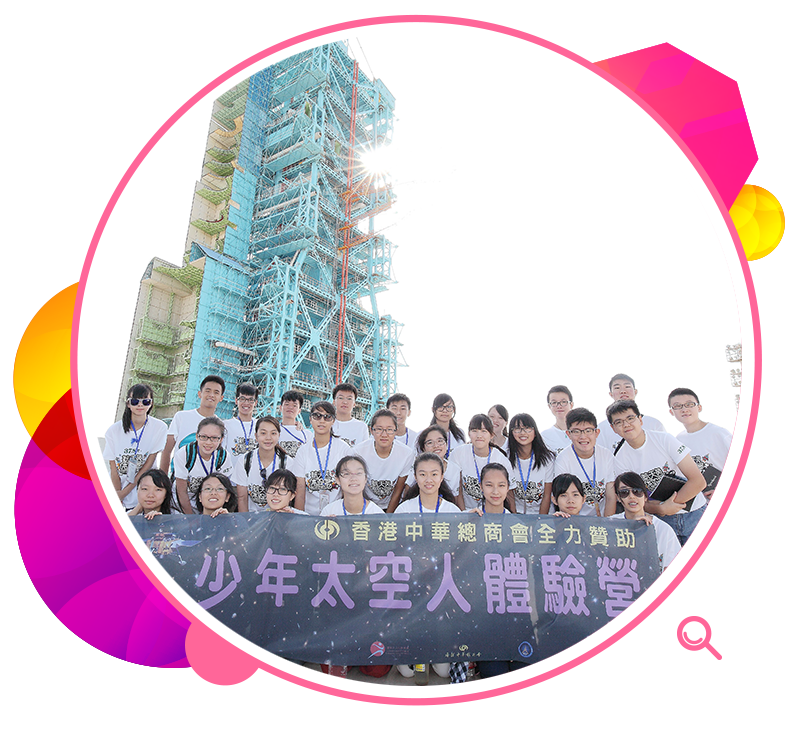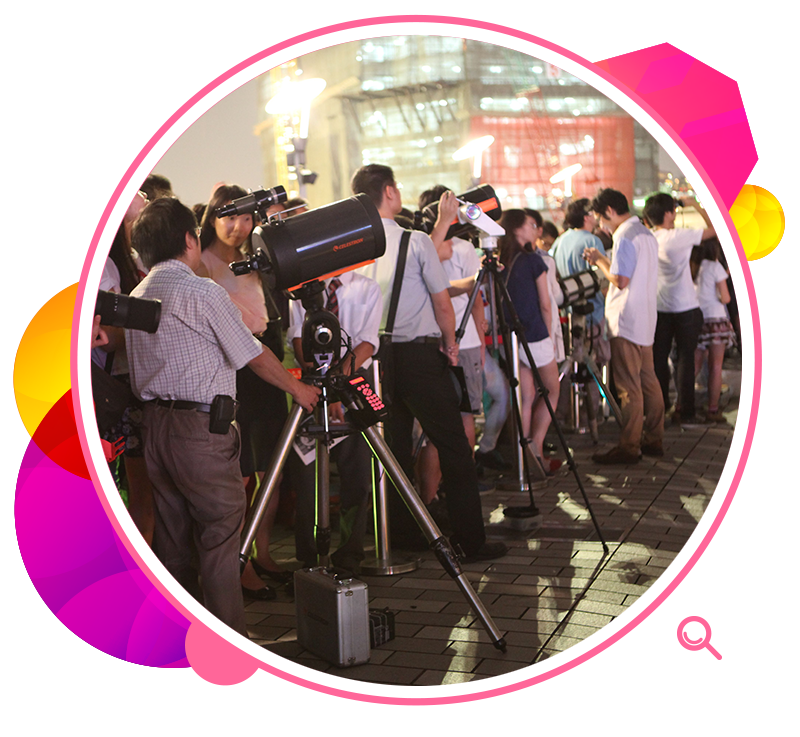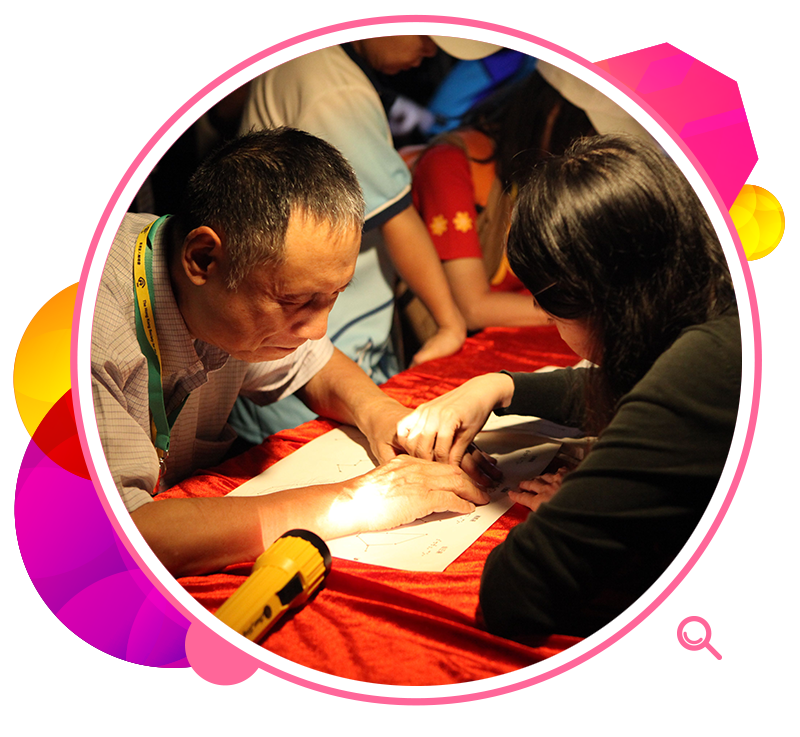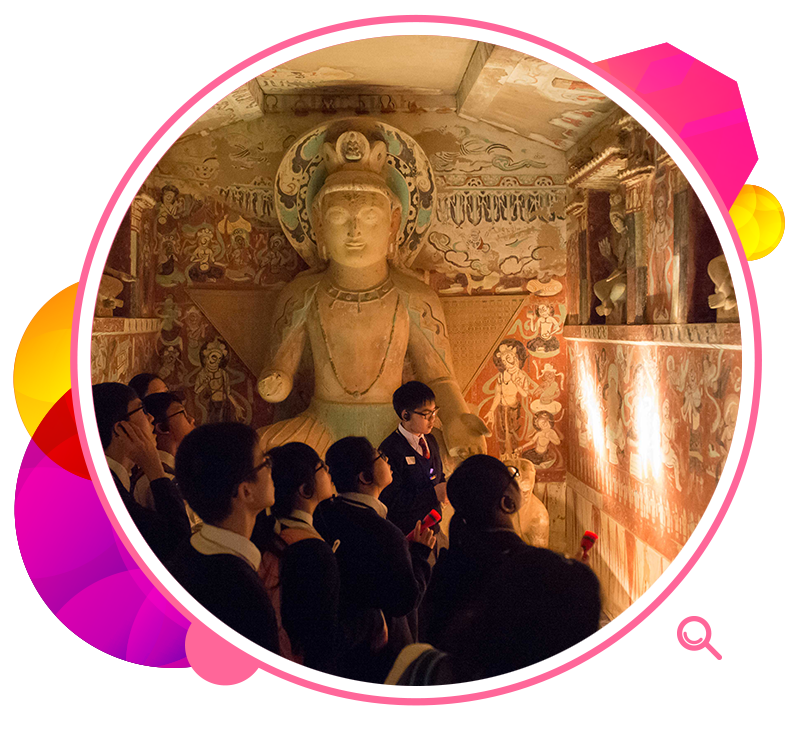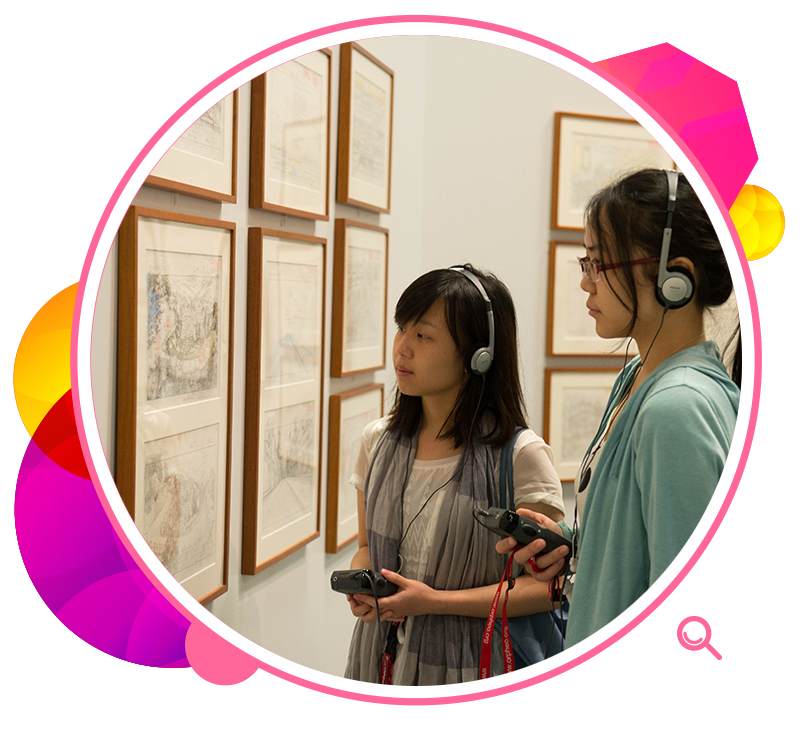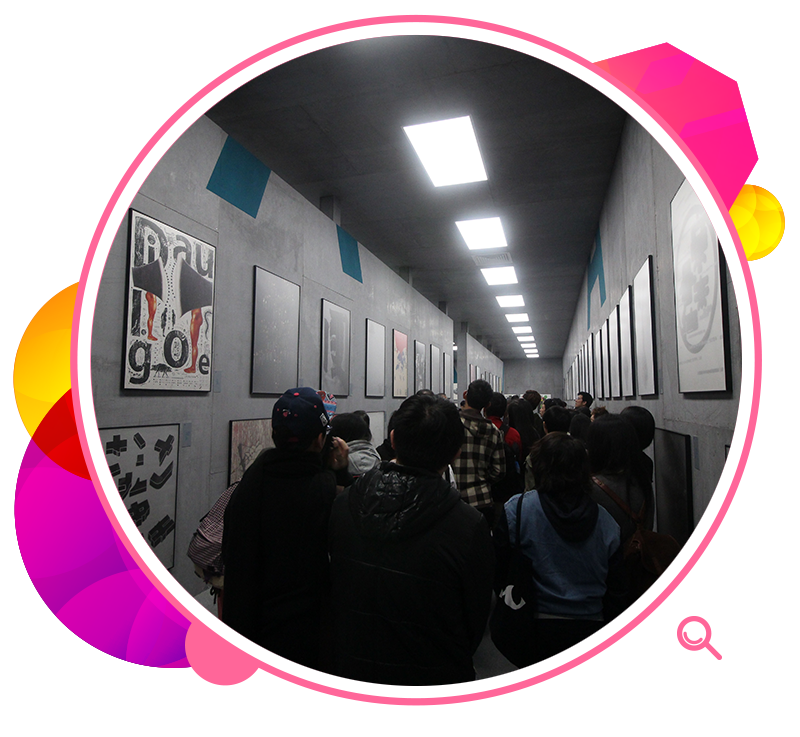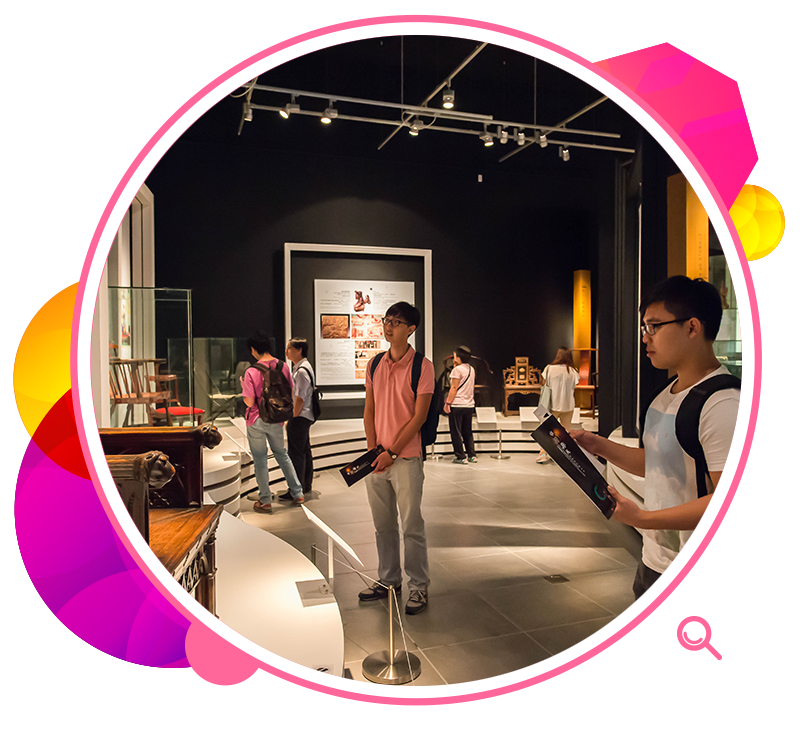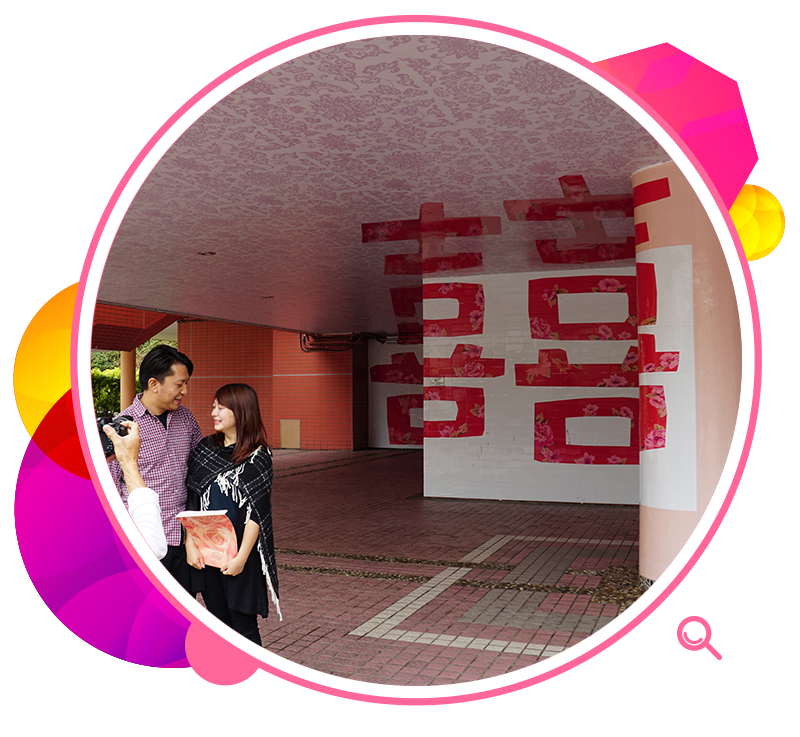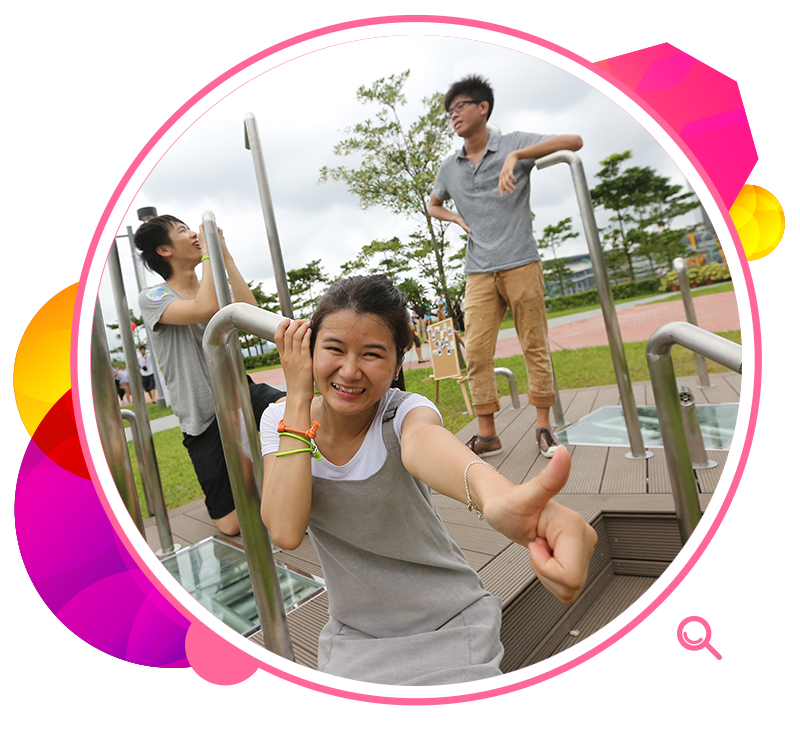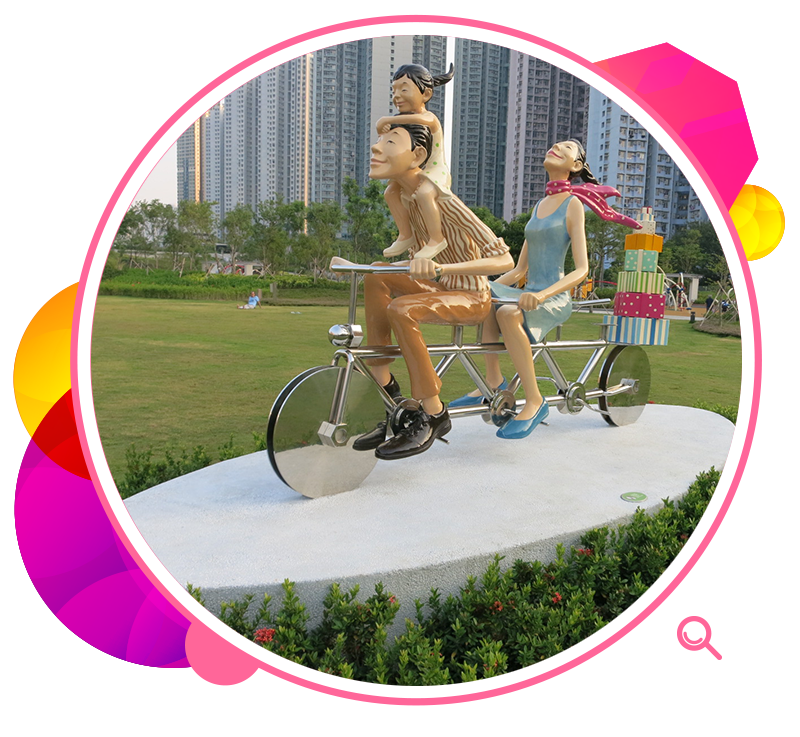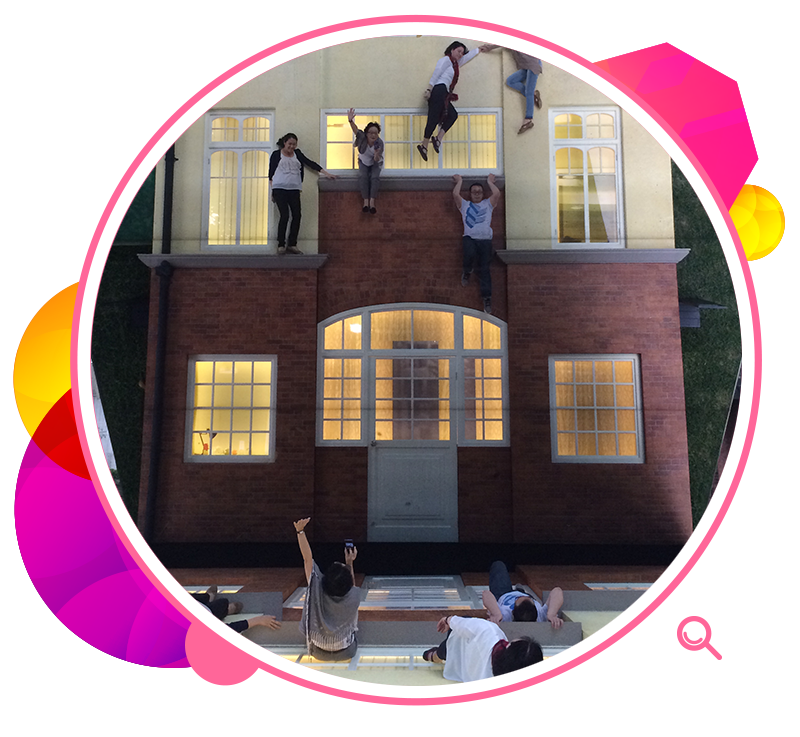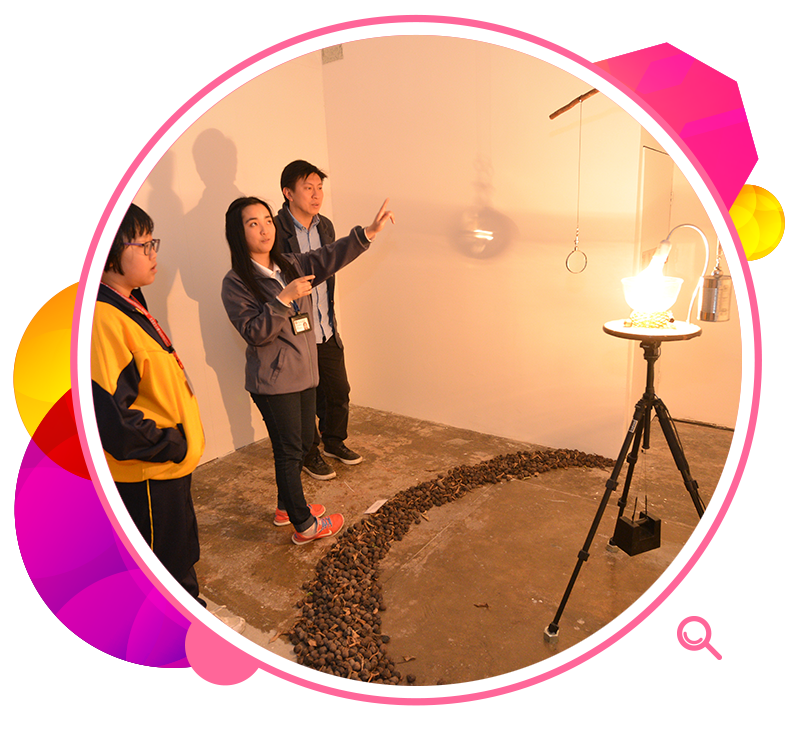Main Content
Museums
LCSD manages seven major museums: the Hong Kong Museum of Art, the Hong Kong Museum of History, the Hong Kong Museum of Coastal Defence, the Hong Kong Science Museum, the Hong Kong Space Museum, the Hong Kong Heritage Museum, and the Dr Sun Yat-sen Museum. Their roles are to acquire, conserve, research, exhibit and interpret both Hong Kong’s tangible and its intangible cultural heritage.
The department also manages the Hong Kong Film Archive, the Art Promotion Office, the Hong Kong Heritage Discovery Centre, and the Ping Shan Tang Clan Gallery cum Heritage Trail Visitors Centre, along with seven smaller museums, namely the Flagstaff House Museum of Tea Ware, the Lei Cheng Uk Han Tomb Museum, the Law Uk Folk Museum, the Sheung Yiu Folk Museum, the Sam Tung Uk Museum, the Hong Kong Railway Museum, and the Fireboat Alexander Grantham Exhibition Gallery.
In 2014-15, over 6.1 million visitors patronised LCSD’s museums, where they were able to enjoy many inspiring and enjoyable exhibitions and programmes designed for a range of different audiences.
During the year, LCSD published its third Five-Year Corporate Business Plan for the public museums, covering 2014-19. This lays out the vision, mission, core values, and its plans for achieving excellence for its museums. Individual museums and offices also drew up their own Annual Plans for 2014-15.
Museum Advisory Panels
Three Museum Advisory Panels (Art, History and Science) were set up in October 2010 to enhance accountability and public involvement in the management of the museums. In the year under review, they continued to advise the department on the positioning of museums, on strategies for business development, marketing and community involvement, and on measures for enhancing operational efficiency and accountability. The panels comprise academics, museum experts, artists, art promoters, marketing / public relations experts, and community leaders.
Intangible Cultural Heritage Advisory Committee
The Intangible Cultural Heritage Advisory Committee was set up in July 2008 to monitor and advise on the first territory-wide survey of Hong Kong’s intangible cultural heritage (ICH). The committee, which comprises local academics, experts and prominent community figures, commenced its fourth term on January 1, 2015, with an expanded membership incorporating a wider range of experts. Its terms of reference were also widened to cover the safeguarding of our ICH through research, promotion, enhancement, transmission and revitalisation.
With reference to the findings of the first territory-wide survey of ICH in Hong Kong and the comments received after a four-month public consultation, the committee endorsed the first ICH inventory list comprising 480 items, which was announced in June 2014. The Hong Kong Heritage Museum collaborated with the Hong Kong Central Library to establish an online Hong Kong Intangible Cultural Heritage Database, which can be publicly accessed through the MMIS. Related information on the 480 inventory items, with images, was uploaded onto the database in December 2014.
Museum Trainee Scheme
The Museum Trainee Scheme was begun in 2010 to develop a new generation of museum professionals. Trainees are attached to the Hong Kong Museum of Art, the Hong Kong Museum of History, the Hong Kong Heritage Museum, the Hong Kong Film Archive, the Art Promotion Office and the Conservation Office, and receive two-year on-the-job training in museum management or conservation services. The trainees learn how to manage museum services and organise education programmes, and also gain hands-on experience in curating exhibitions and projects. There were 24 trainee placements in 2014-15.
Hong Kong Museum of Art
During the year, the Hong Kong Museum of Art, the Musée Cernuschi, Asian Arts Museum of Paris and the Musée National des Arts Asiatiques Guimet co-organised the exhibition Paris • Chinese Painting: Legacy of the 20th Century Chinese Masters, one of the programmes of Le French May and France-Chine 50. This exhibition showcased almost a hundred works drawn from the co-organising institutes and other French museums, including oil paintings, Chinese ink paintings, sketches, lithographs, sculptures and more, demonstrating the impact of European art on 20th century Chinese painting.
The exhibition Ming and Qing Chinese Arts from the C. P. Lin Collection showcased 270 artworks of the Ming and Qing dynasties from the C. P. Lin Collection. The exhibition focused on historical Chinese artistic pursuits, and demonstrated the relation of aesthetics and craftsmanship in the era.
In a tribute to Tong King-sum, a well-respected forerunner in Hong Kong sculpture that his achievements represented those of local artists, Tempting Touch – the Art of Tong King-sum exhibition was staged. The exhibition featured 23 sets of works taken from the collections of the museum, the Hong Kong Heritage Museum and Mrs Tong King-sum.
An outdoor exhibition Construction • Transition @artsquare opened in November 2014. This exhibition displayed a huge installation work by renowned architect and artist Rocco Yim, along with a set of mobile carts created by local art groups CoLAB and Very Hong Kong.
The museum also delivered a wide array of educational programmes to enhance public appreciation of art. Sponsored by the Friends of the Hong Kong Museum of Art, a one-year free coach service was provided to encourage local schools to visit the museum’s exhibitions.
To coincide with exhibitions, special lecture programmes were conducted to stimulate public interest in art and enhance the knowledge and appreciation of art works.
One green initiative in the year was the launch in January 2015 of a new design for the Museum Newsletter, using less paper.
In summer 2014, with the partnership of SCAD Hong Kong, the museum and the Friends of the Hong Kong Museum of Art co-organised a programme for senior secondary school students, Summer Art Cadets 2014 – An Animated Virtual Tour around Hong Kong. This two-week intensive art experience included workshops and tours. Students could explore their creativity and experience the pleasures of art making and producing their own animation works.
The Jockey Club Art Appreciation Programme for the exhibition Ju Ming – Sculpting the Living World, sponsored by the Hong Kong Jockey Club Charities Trust, continued to provide thematic audio guides, an interactive photo-taking and education corner, art workshops, free public guided tours, and art accessibility activities for disabled groups, all aimed at enhancing visitors' interest in the exhibition. In total, the museum’s education and extension programmes attracted over 40 000 participants in 2014-15.
To deepen our understanding of the development of art in Hong Kong and to enhance its archive of materials, the museum began two new research projects in 2014 with two non-profit-making organisations. The Hong Kong Art History Research Project (Phase II), undertaken in collaboration with the Asia Art Archive (AAA), was a continuation of the pilot research project completed in 2013, and will further study the art ecology of the 1960s and 1970s. The other research project, A Survey of Western Media Art in Pre-1960s Hong Kong (Phase I), undertaken in collaboration with the Hong Kong Art History Research Society, will study the development of art in Hong Kong up to the 1960s.
Flagstaff House Museum of Tea Ware
The Flagstaff House Museum of Tea Ware is a branch of the Hong Kong Museum of Art. Its collection features tea ware and related implements from the collection of the late Dr K S Lo, as well as rare Chinese ceramics and seals donated by the K S Lo Foundation. To celebrate the 30th Anniversary of the Museum of Tea Ware, a whole year of celebration activities was planned for 2014. One of the programme highlights was the exhibition Gems of Yixing Tea Ware from the Nanjing Museums, featuring significant items from their collections. From March 26 to July 10, 2014, over 39 000 people visited the exhibition. The museum, which also organised many activities to introduce visitors to tea ware and the art of tea drinking, attracted over 213 900 visitors during the year.
Hong Kong Museum of History
The mission of the Hong Kong Museum of History is to foster interest in history, enrich cultural life, strengthen social cohesion, and nurture a national identity. It collects, preserves and displays cultural objects closely related to the history of Hong Kong, South China and beyond.
In addition to its permanent exhibition The Hong Kong Story, the museum presents various thematic exhibitions either on its own or in conjunction with other museums and cultural organisations from Hong Kong, the Mainland, and overseas.
Opening in October 2014, the major exhibition Treasures from Tsarskoye Selo, Residence of the Russian Monarchs was the first official collaboration between museums in Russia and the HKSAR since the signing of the memorandum of understanding on cultural co-operation between Hong Kong and Russia. Featuring over 200 exquisite items on loan from the Tsarskoye Selo State Museum-Preserve of Russia, including paintings, costumes, porcelain, weapons and works of art, this exhibition introduced aspects of the history and culture of Russia under the Romanov dynasty from the early 18th century to the beginning of the 20th century.
To mark the 120th anniversary of the First Sino-Japanese War in 2014, the museum also hosted the exhibition The Aftermath of the First Sino-Japanese War: The Lease of the New Territories and Weihaiwei. This exhibition explored the context in which the territories were leased to Britain in the late 19th and early 20th centuries, based on extensive material drawn from the Collection of Sir James Stewart Lockhart held by the National Library of Scotland.
The thematic exhibition Historical Imprints of Lingnan: Major Archaeological Discoveries of Guangdong, Hong Kong and Macao showcased over 700 archaeological finds from the most significant sites in these three places, and explored the historical and cultural developments of the Lingnan area. An international conference was organised to complement the exhibition, at which experts and scholars from the Mainland, Hong Kong, Macao, UK and New Zealand were able to share the latest research into the history of the Lingnan region from the prehistoric period to the Song and Ming dynasties. New studies were also presented on archaeological technology, the conservation of archaeological sites, and recent archaeological discoveries.
The thematic exhibition Assimilation into Han Culture: The Ancient Funerary Pottery of Guangxi featured 76 sets of burial pottery models dating back from the Western Han Dynasty to the Southern Dynasty.
To further build up its collections, during the year the museum launched a new collection initiative, the Hong Kong Industries Collection Campaign. This campaign appealed to the public to donate items related to Hong Kong industries of different periods. More than 1760 items were acquired through this campaign, alongside acquisitions from ongoing collection campaigns on the cheongsam, children’s life in Hong Kong, and toys.
Throughout the year, the museum organised a wide variety of educational and extension activities, including lecture series, workshops, conferences, field trips, film shows, competitions and family and outreach programmes, all designed to cultivate public interest in local history and our cultural heritage.
In October 2014, the 4th Inter-school Competition of Project Learning on Hong Kong’s History and Culture was held, followed in January 2015 by the 9th Competition on Historical Photographs Writing Research. The museum also collaborated with The Hong Kong Academy for Gifted Education to organise the Future Curator Training Course in August 2014. Close collaborations were established with local universities and institutions, including the Hong Kong University of Science and Technology, the Chinese University of Hong Kong, the Hong Kong Baptist University, and the Centre for Hong Kong History and Culture Studies of Chu Hai College of Higher Education, which resulted in the organisation of public seminars and lecture series.
To cater for special needs groups, the museum continued its collaboration with the Arts with the Disabled Association Hong Kong on the Interactivity Scheme, which offers sign interpretation guided tours and model-making workshops for people with hearing or visual impairments. At the same time, the Inclusive Life: Museum for All project offered special guided tours with sign interpretation and audio description, and model-making and touching workshops for those with hearing or visual impairments and those with intellectual disabilities, enabling them to fully enjoy the Treasures from Tsarskoye Selo, Residence of the Russian Monarchs exhibition.
The museum continued its collaboration with local community groups and non-profit-making organisations, including the Boys’ and Girls’ Clubs Association of Hong Kong, the Po Leung Kuk, the Heep Hong Society and the New Immigrants Service Association. Its Caring for the Community Scheme was launched in the year for the elderly, new immigrants, teenagers, and ethnic minority groups, with the aim of fostering an understanding of Hong Kong’s history and culture among these groups through extension activities such as story-telling sessions and model-making workshops.
The museum receives generous sponsorship from the Hong Kong Jockey Club Charities Trust for the 18-month pilot project entitled Journey for Active Minds: Jockey Club Museum Programme for the Elderly. Since March 2014, the programme has begun to provide guided tours, workshops on exhibitions and outreach programmes for the elderly and people with Alzheimer’s disease, enabling participants to explore cultural history and works of art in an environment of intellectual stimulation, experience sharing and social interaction.
The Hong Kong Museum of History attracted over 759 900 visitors during the year. In addition to the Hong Kong Museum of Coastal Defence and the Dr Sun Yat-sen Museum, the Hong Kong Museum of History also manages three small branch museums – the Fireboat Alexander Grantham Exhibition Gallery at Quarry Bay Park, the Lei Cheng Uk Han Tomb Museum in Sham Shui Po, and the Law Uk Folk Museum in Chai Wan. They attracted over 91 300, 39 400 and 14 800 visitors respectively during the year.
Hong Kong Museum of Coastal Defence
The old Lei Yue Mun Fort in Shau Kei Wan has been transformed into the Hong Kong Museum of Coastal Defence, a branch of the Hong Kong Museum of History. Apart from its permanent exhibition, 600 Years of Coastal Defence in Hong Kong, the museum presented two thematic exhibitions during the year: Conflict and War: China and Japan 1894-95, and a Pictorial Exhibition on the Nanjing Massacre.
In March 2015, the museum held the Fourth International Symposium on the Maritime Defence of Modern China in collaboration with the Department of History of the Hong Kong Baptist University, the Modern History Research Centre of the Hong Kong Baptist University, and the Modern Chinese History Society of Hong Kong. More than 30 scholars and experts from Hong Kong, the Mainland and overseas took part in the symposium.
The museum attracted over 120 800 visitors during the year.
Dr Sun Yat-sen Museum
The Dr Sun Yat-sen Museum, housed in Kom Tong Hall, a declared monument, has two permanent exhibitions covering Dr Sun’s life and his close connections with Hong Kong. In addition, two thematic exhibitions were organised during the year, The Whampoa Military Academy: Modern China’s Crucible for Military Talent, and Collection Highlights: A Century of Kom Tong Hall.
This museum attracted over 58 900 visitors during the year.
Hong Kong Science Museum
The Hong Kong Jockey Club Series: Legends of the Giant Dinosaurs exhibition, sponsored by the Hong Kong Jockey Club Charities Trust, was the largest of its type ever held in Hong Kong. Occupying an area of 2 500 square metres, the exhibition drew international participation from 13 institutions, including a number of natural history museums from the Mainland and professional institutes from overseas. Its rich content included more than 190 items, about half of which were fossilised dinosaur skeletons, skulls, vertebrae, feathered dinosaurs and eggs. Other highlights included a 30-metre model of a dinosaur skeleton, robotic dinosaurs, and a reconstructed dinosaur tracksite. The exhibition concluded successfully with more than 770,000 visitors. It not only broke the records for total attendance at thematic exhibitions organised by the Hong Kong Science Museum, but also proved to be the most popular exhibition ever organised by LCSD.
To enhance the appeal of the exhibition, the museum developed a number of multimedia programmes, computer animations and interactive exhibits that employed state-of-art technology such as object recognition, real time 3D rendering and augmented reality. The Jurassic World mobile app, which enabled audiences to view dinosaurs in action, received the Best Mobile Apps (Mobile Information) Gold Award at the Hong Kong ICT Awards 2014, and a Certificate of Merit at the Asia Smartphone Apps Contest 2013/14.
The Move and Play! exhibition, held from June 20 to October 29, 2014, was a fun-filled exhibition packed with 20 groups of very challenging exhibits aimed at testing the physical techniques and body coordination skills of visitors. By introducing visitors to the sensory and mental processes involved, the exhibition also enhanced their knowledge of senses such as sight, hearing, touch, proprioception and balance, as well as the impact of physical exercise on the human body. The exhibition was produced and supplied by Heureka, the Finnish Science Centre, and attracted attendance of over 283 700 visitors.
The Exhibition on China's Lunar Exploration Programme, held from July 21 to August 24, 2014, featured around 20 replicas, models and interactive exhibits, including replicas of the lunar lander and the Yutu Lunar Rover. Aimed at introducing the advances and accomplishments of China's lunar exploration programme, revealing the motivations behind the drive to investigate the moon, and arousing public interest in space technology, the exhibition was well received with over 143 600 visitors. The exhibition was presented by the Home Affairs Bureau of the Government of the HKSAR and the China National Space Administration, and organised by LCSD, the News Center of the China National Space Administration, the Lunar Exploration and Space Program Center of the China National Space Administration, in association with the Chinese Academy of Sciences, the China Aerospace Science and Technology Corporation, the China Aerospace Science and Industry Corporation, the China Electronics Technology Group Corporation, the Xichang Satellite Launch Center, the Beijing Aerospace Control Center, and the Hong Kong Polytechnic University. The exhibition also introduced the local contributions to China’s aerospace technology being made by the Hong Kong Polytechnic University. To supplement the content of the exhibition, Chinese aerospace experts were specially invited to deliver talks on past China lunar missions, and interactive weekend programmes focusing on lunar science were also arranged.
The Strange Matter exhibition, held from December 12, 2014 to April 15, 2015, introduced visitors to the amazing world of modern materials through a host of interactive activities. Visitors were able to interact with various types of materials such as ferrofluids, amorphous metals, memory metals and foam, each of which generated unique experiences. The exhibition was produced and provided by the Ontario Science Centre of Canada and the Materials Research Society, and had welcomed over 148 800 visitors as at March 31, 2015.
During the year, over 1 586 100 people visited the exhibitions and took part in the education and extension activities.
Hong Kong Space Museum
Since its opening in 1980, the Hong Kong Space Museum has promoted astronomy to members of the public through exhibitions, planetarium shows and extension activities. Equipped with advanced projection and control systems, the Stanley Ho Space Theatre offers awe-inspiring experiences through its OMNIMAX, 3D Dome Shows and Sky Shows. The interactive exhibits enable visitors to explore topics in space science in entertaining and educational ways.
To raise public awareness of light pollution in Hong Kong, the Space Museum joined hands with The University of Hong Kong and the Ho Koon Nature Education cum Astronomical Centre to organise the Light Pollution Project Competition and Photography Competition. A special exhibition showcasing the winning entries in the competitions was staged in the museum lobby in July and August 2014.
Jointly organised by the Chinese General Chamber of Commerce, the China Astronaut Research and Training Center, the Jiuquan Satellite Launch Center and the museum, the Young Astronaut Training Camp selected 30 local secondary students from 200 nominees to participate in a space science and astronaut training camp to Beijing and Jiuquan from August 2 to 10, 2014. The camp proved to be a very rewarding learning experience for the participants.
Taking advantage of a special astronomical phenomenon to promote astronomy, the museum conducted a Sidewalk Astronomy activity to observe the total lunar eclipse on the evening of October 8, 2014, at the Avenue of Stars. Around 3 000 people attended the event.
A Stargaze Camp for All and the Blind was held on October 18, 2014 in the field area adjacent to Astropark in Sai Kung. Involving more than 40 participating organisations, the Camp provided booth activities and astronomical observation programmes that gave participants the chance to experience the pleasures of stargazing. More than 2 200 participants joined the camp, including people with visual, hearing and physical impairments, and underprivileged and ethnic minority groups.
In September 2014, the museum launched a free stargazing mobile app, Star Hoppers, which integrates the Chinese and Western star charts with information about astronomical events and related activities. Using its realtime generated star maps with bilingual audio recordings, users can identify celestial objects and constellations anytime and anywhere through their mobile phones or tablets, and listen to stories about the constellations. The app has proved popular, having been downloaded more than 46 000 times since its launch.
During the year, the museum presented one Sky Show, two 3D Dome Shows, three OMNIMAX Shows and two School Shows, including The Stories of Solar Eclipse, the first in-house produced Sky Show to be displayed using the digital planetarium projection system. The Stanley Ho Space Theatre programmes attracted around 348 700 visitors.
Around 479 500 people visited the Hall of Space Science, the Hall of Astronomy and 13 special exhibitions, while over 24 200 people participated in 417 sessions of extension activities.
Hong Kong Heritage Museum
The Hong Kong Heritage Museum offered a diverse range of programmes and activities during the year, with a special focus on ICH, popular culture and design.
Upon completion of the territory-wide survey of ICH in Hong Kong, an inventory list comprising 480 ICH items was drawn up on the advice of the ICH Advisory Committee following a four-month public consultation on the draft inventory list that took place from July to November 2013. This first inventory of Hong Kong’s ICH was announced in June 2014. In December 2014, four ICH items from Hong Kong were inscribed onto the fourth national list of ICH: the arts of the Guqin, Quanzhen temples Taoist ritual music, Hakka unicorn dance in Hang Hau, Sai Kung and Wong Tai Sin belief and customs. Together with the six items included earlier (Cantonese opera, herbal tea, the Cheung Chau Jiao Festival, the Tai O dragon boat water parade, the Yu Lan Ghost Festival of the Hong Kong Chiu Chow community and the Tai Hang fire dragon dance), there are currently ten ICH items from Hong Kong on the national list.
This year, for the first time, the museum participated in Hong Kong Week, an annual cultural exchange event involving Hong Kong and Taiwan. To echo this year’s theme, Hong Kong Folklore • Literary Footprints, the museum organised Indigenous Hong Kong - An Exhibition on our Intangible Cultural Traditions, one of the opening programmes held in Taipei. This exhibition together with its associated extension activities presented 13 items of Hong Kong's ICH revealing the city's folk traditions to audiences in Taiwan.
To promote Dunhuang art and culture to Hong Kong audiences, a blockbuster exhibition entitled Dunhuang — Untold Tales, Untold Riches, co-organised with the Dunhuang Academy, was staged at the Hong Kong Heritage Museum from late November 2014 to mid-March 2015. The display of about 120 sets of exhibits, including replicas of grottoes, copies of murals, painted sculptures, scrolls and scriptures, presented the multi-faceted nature of Dunhuang culture from historical, religious, artistic, cultural and social perspectives. The exhibition attracted around 196 000 visitors.
The exhibition Studio Ghibli Layout Designs: Understanding the Secrets of Takahata and Miyazaki Animation was held in the summer, featuring the hand drawn layouts used as the blueprints for popular animated films. Organised with the cooperation of Studio Ghibli and the Ghibli Museum, Mitaka, it featured over 1 300 layouts covering the whole production history of Studio Ghibli. The exhibition was very well received, attracting a total attendance of over 434 000 in just over three months.
Teaming up with the Hong Kong Designers Association for the fifth time, the museum presented Vision - Hong Kong International Poster Triennial 2014, which continued to document new and exciting developments in poster design while also encouraging international cultural exchange and enriching the museum’s collection. This year the triennial attracted 1 556 entries by 518 designers, groups and companies hailing from 32 countries or regions. The professional judging panel produced a shortlist of 222 entries which, together with the judges’ representative works, were showcased in the exhibition.
In partnership with the Hong Kong Photographic Culture Association, the museum held the exhibition Twin Peaks: Contemporary Hong Kong Photography in response to the Hong Kong International Photo Festival 2014. The work of nine accomplished artists was on display in two disparate groups of photographs, demonstrating two separate approaches to photographic art as captured in the exhibition title Twin Peaks. The exhibition delved into the gradual evolution of the photographers’ artistic ideas, and the techniques they used to create their works of art.
A new initiative entitled Please Have a Seat, made up of a series of education and exhibition programmes on the theme of chairs, was held from June to September 2014. The highlight of the programme was an exhibition curated by the museum and co-organised by the Palace Museum, titled The Extraordinary in the Ordinary: Chairs for Viewing the World through Time. This included valuable exhibits from the collections of a number of major museums from around the world (including the British Museum, the Victoria and Albert Museum, the Brooklyn Museum, and the Palace Museum in Beijing), all of which were exhibited for the first time ever in Hong Kong.
The museum, for the first time, collaborated with the Education Bureau, the Hong Kong Arts Development Council and the Institute of Creativity of the Hong Kong Baptist University to present the Arts Buddies project. This project offered a series of training programmes to participating secondary and tertiary students that enhanced their knowledge of and bolstered their skills in arts appreciation and art promotion. The museum also collaborated with the Education Bureau in running gallery talks, workshops and seminars in support of Life-wide Learning and the Senior Secondary Curriculum.
The Hong Kong Heritage Museum, which attracted over 930 300 visitors during the year, also manages three branch museums: the Sam Tung Uk Museum, the Hong Kong Railway Museum, and the Sheung Yiu Folk Museum. These three branch museums attracted over 92 300, 227 400 and 41 100 visitors respectively.
Art Promotion Office
The Art Promotion Office, in co-operation with various partners, organised a series of community and public art projects in 2014-15 designed to enrich our cultural life and encourage public appreciation of art.
Art@Government Buildings (AGB) is a public art project that brings works of art into government buildings, and is designed to stimulate the appreciation and enjoyment of the arts. In the past three editions of AGB starting from 2010, 13 government buildings have had art works introduced into them to enhance their aesthetic ambience.
ArtAlive@Park (AAP) is a public art project that showcases young people's artistic talent in local parks. It also aims to make art accessible to all walks of life, and to bring people closer to art. AAP 2014 kicked off in May 2014 at the Central and Western District Promenade (Central Section). Three local design education institutions were invited to design 13 site-specific artworks for a three-month display. A variety of cultural and performing arts groups were invited to present a series of special programmes to accompany the event.
Energizing Tsun Yip Street Playground as Kwun Tong Industrial Culture Park (Phase 1) is a collaborative project undertaken with the Energizing Kowloon East Office. Adopting the theme The Spirit of Creation — The Past and Future of Industries in Kowloon East, the project showcases Kwun Tong’s industrial development through an exhibition of graphics, videos and artworks inside four containers. Running from September 2014 to August 2017, the project aims to transform the Tsun Yip Street Playground into a lively and creative urban space and thematic park.
The Public Art Scheme of the Town Park, Indoor Velodrome-cum-Sports Centre, Tseung Kwan O, was launched in 2012 to stimulate public interest in sport and embellish the Hong Kong Velodrome Park. Three commissioned public artworks were installed in 2014-15.
ARTivating Public Buildings is a public art project aimed at giving the public more opportunities to access art in their busy daily lives, by transforming some public areas of government buildings into interesting art spaces. In early 2015, four groups of artists were selected to create site-specific and community-related artworks in the Stanley Municipal Services Building, the Tung Chung Municipal Services Building, the Tai Kok Tsui Municipal Services Building and the Lung Yat Community Hall, to be displayed from mid-2015 to mid-2016.
Oil Street Art Space (Oi!)
Oi! is an open platform for young local artists where ideas about art can be exchanged. It aims to promote art at the community level, and has developed into an innovative and engaging venue that encourages collaboration and co-creation in art.
In 2014-15, Oi! organised the annual exhibition Reflection!. Local artist Kingsley Ng and art group Meta4 Design Forum, with overseas artist Leandro Erlich, were invited to construct a point of convergence for reality and fabricated imagery through installations, including sound and vision. Oi! also organised a number of public engagement programmes, including XCHANGE, Connectivity! Urban Re-arc-tion, and In-Situ!. Oi! has become a valuable platform for social engagement with the local neighbourhood.
The Sparkle! exhibition series was launched by Oi! with the aim of boosting experimental art, and stimulating discussions about the relationship between art, contemporary life and social issues. During 2014-15, Oi! organised four exhibitions under this series, one of which was Sparkle! regarding lightness: On Life's Way. This exhibition was a digest of dialogue and interaction between five guest curators, Yeung Yeung, Susi Law, Joao Li, So Wai Lam and Wong Chun Hoi, and eight local artists, Joe Chan Kiu Hong, Thickest Choi, Sunday Lai, Swing Lam, Fiona Lee, Mak Ying Tung, Wong Chun Hoi and Wong Kit Yi (with Ali Wong). Artworks were grouped under three themes: Where else to go, Elsewhere to go and Way to go, showcasing different aspects of local contemporary art.
Hong Kong Visual Arts Centre (vA!)
vA! provides a platform for art learning and exchange between artists, art enthusiasts and the general public. It does this by establishing partnerships with artists, relevant institutions and art organisations, and working together with them to organise quality activities that meet ever-changing public demands and facilitate enjoyment through creating and participating in art.
In 2014-15, vA! organised its signature programme the Art Specialist Course, a year-long art-training programme for amateurs and young artists. Workshops on new media art and studio art practices were also organised to give participants a better understanding of how contemporary art is being created.




